
-
Find the right food for your petTake this quiz to see which food may be the best for your furry friend.Find the right food for your petTake this quiz to see which food may be the best for your furry friend.Featured products
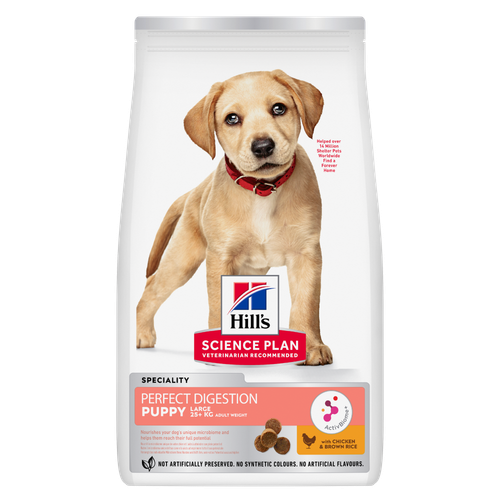 Perfect Digestion Large Breed Puppy Food
Perfect Digestion Large Breed Puppy FoodPrecisely balanced nutrition with Hill's ActivBiome+ prebiotic blend actively contributes to supporting digestive health and overall wellbeing to help your pet feel their best
Shop Now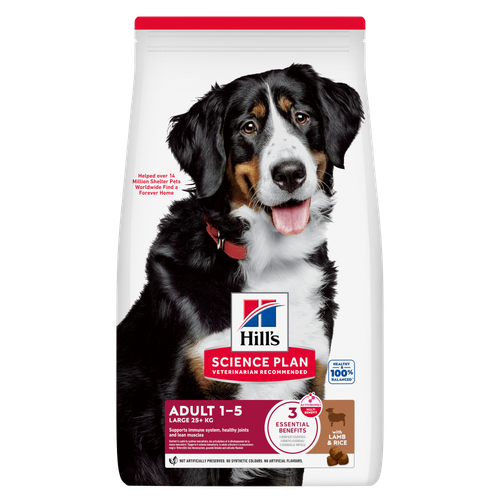 Large Breed Adult Dog Food
Large Breed Adult Dog FoodHill's Science Plan Large Breed Adult Dog Food with Lamb & Rice is a complete pet food, specially formulated with ActivBiome+ Multi-Benefit Technology.
This food is specifically designed to fuel the energy needs of large breed dogs during the prime of their life.Shop Now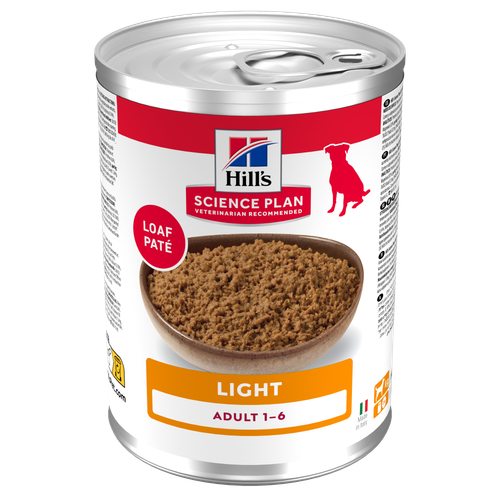 Adult Light Dog Food
Adult Light Dog FoodHill's Science Plan Light Adult Wet Dog Food is a complete premium pet food for adult dogs that tend to gain weight easily. This deliciously smooth loaf is formulated to deliver the appropriate amount of energy to support weight maintenance in adult dogs.
Shop NowFeatured products CULINARY CREATIONS ADULT CAT FOOD
CULINARY CREATIONS ADULT CAT FOODHill's Science Plan CULINARY CREATIONS Adult cat food with Salmon & Carrots was formulated to provide a great-tasting experience to cats. Its delicious flavour and texture are combine with essential nutrients to support cats' optimal health during the prime time of their life. Specially formulated with high-quality salmon protein, essential taurine for heart health & balanced minerals to support kidneys & bladder.
Shop Now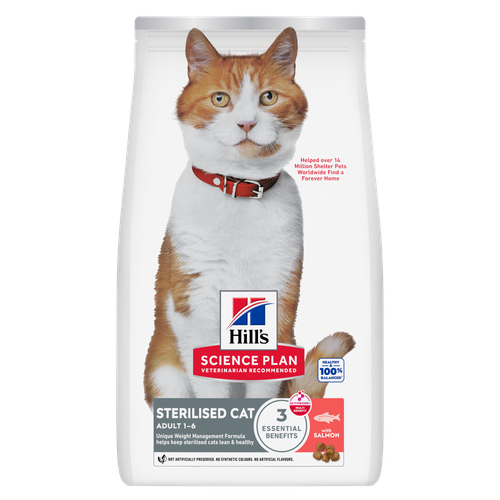 Sterilised Adult Cat Food
Sterilised Adult Cat FoodHill's Science Plan Adult Sterilised Cat Dry Food with Salmon is specially formulated with ActivBiome+ Multi-Benefit Technology. It is a precisely balanced nutrition, tailored to meet the needs of sterilised cats, to help keep sthem lean & healthy.
Shop Now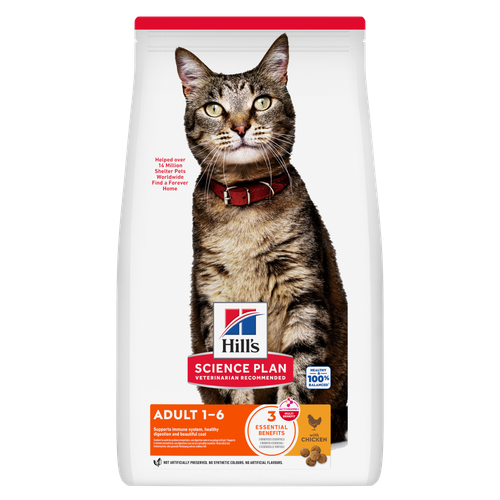 Adult Cat Food
Adult Cat FoodHill's Science Plan Adult Cat Food with Chicken is a complete pet food, specially formulated with ActivBiome+ Multi-Benefit Technology.
This food is specially formulated to fuel the energy needs of cats during the prime of their life.Shop Now -
Dog
- Dog Tips & Articles
-
Health Category
- Weight
- Food & Environmental Sensitivities
- Urinary
- Digestive
- Joint
- Kidney
-
Life Stage
- Puppy Nutrition
- Adult Nutrition
- Senior Nutrition
Cat- Cat Tips & Articles
-
Health Category
- Weight
- Skin & Food Sensitivities
- Urinary
- Digestive
- Kidney
-
Life Stage
- Kitten Nutrition
- Adult Nutrition
Featured articles Microchipping: The Facts | Hill's Pet
Microchipping: The Facts | Hill's PetThe government has announced that as of April 2016, all dogs in the UK must be microchipped by law.
Read More The Incredible Science Behind Your Pet's Microbiome
The Incredible Science Behind Your Pet's MicrobiomeLearn what your pet's microbiome is, how it contributes to your pet's gut and overall health, and why nutrition is important in maintaining healthy microbiomes.
Read More Pet Nutrition: What Makes "Healthy" Pet Food Healthy? | Hill's Pet
Pet Nutrition: What Makes "Healthy" Pet Food Healthy? | Hill's PetIn people, the right diet is very important. If you are eating the wrong way for your metabolism, activity level, age and lifestyle you could end up with health issues.
Read More -


Having decided to bring home a new puppy, it's important to balance your excitement with a plan for puppy-proofing your home and garden. In this article we’ll look at how you can best prepare to protect your puppy from your house and vice versa!
Through your dog's eyes
Before you bring your new best friend home, you need to do a tour of your house and garden and try to see it through your puppy’s eyes. Puppies are small, curious and will explore every bit of their new surroundings, mostly by smell and by putting things in their mouths! When they get to the teething stage, they will be wanting all sorts of things to chew, so assume everything is fair game as far as your puppy is concerned.
If you’re physically up to it, get down on your hands and knees and do the tour this way. Don't knock this technique; it lets you better identify any toys, objects, or even rubbish your dog could accidentally swallow (or purposely try to eat). If you have kids, get them to join in or do the crawling part for you!


Tasty Tips
Essential tips for puppy proofing your house
Houses are absolutely full of potential hazards that we may totally overlook as adult humans. We’ve had years of life experience and see the world from a long way off the floor. Your new puppy will need to learn what they can and can’t do and eat, but during that process it’s our job as pet parents to keep them safe until they have. Let’s look at the common hazards inside the house.
- Pick what’s out of bounds:
You may have decided that there are areas of the house, such as bedrooms or a playroom, where the dog will never be allowed to go. This is fine but you need to be consistent, and everyone in the family needs to follow the same rules. Many people use baby gates to cordon off forbidden areas, but bear in mind some puppies might easily slip through a baby gate or get stuck. These days there are plenty of dog gates available for you to choose from. It can also be useful to install one of these even where your puppy will be allowed in case there are times you’d like to keep them in a certain place. For instance, out of the kitchen while you’re cooking or in the living room while you have visitors, etc. - Electrical cables:
You may never notice cables because they’re tucked away, but a small, wriggly puppy will definitely find these and could chew through them and get electrocuted. Move any that you can to higher positions out of reach, and cover the others with cable protectors. Keep an eye on these, because they too may be chewed. Chewed cables can also be a fire hazard for your home. - Shoes and other chewables:
Basically everything is a chewing opportunity for your puppy. Shoes, cushions, rugs, children’s toys and so on. Try to teach your dog early on which things are their toys and which are not, but this will take time, and to start with, you should ensure that anything you don’t want shredded is in a cupboard or out of reach. - Cleaning products:
Hopefully these will be out of sight and reach but do make sure. Bleach in bathrooms or even in the toilet itself could be potential hazards, as are most household detergents and cleaners. - Medicines:
As with cleaning products, hopefully these are tucked away, but dogs will find medication in handbags and all sorts so be vigilant. - Toxic human food:
This may be more of an issue at certain times of year, like Easter and Christmas, but there are lots of human foods that are toxic to dogs, especially young puppies. Children love to give treats, so make sure your children know that your puppy only ever gets dog treats and not human foods. The main foods to watch for are chocolate, grapes and raisins, foods from the onion family and artificial sweeteners. - Toxic house plants:
Make sure you know what plants you have in the house and whether these are toxic to dogs. Either get rid of any that are, or make sure they are well out of reach. - Fires:
Make sure your puppy can’t come into direct contact with any heating devices such as fires, woodburners or gas heaters.
Essential tips for puppy-proofing your garden
Just the same as inside the house, try to see your outside space through your puppy’s eyes. The major hazards outside are:
- Escape routes:
Your house and garden may be full of hazards, but the big wide world outside is even more dangerous. Puppies can squeeze through tiny spaces and gaps, so you need to be absolutely meticulous in making sure that hedges and fences are puppy-proof. If in doubt, consider getting a company to put pet-proof fencing round your garden to be sure. When your puppy is very small, you could cordon off a section of the garden like a large playpen. Remember to make sure there is shade and water. - Shelter:
It’s best to try to be outside with your puppy, but if you’re not, make sure there is shade and water and shelter from the elements in case it rains. Puppies can overheat and become dehydrated very quickly. On the other hand, if they get wet, cold or both, they can quickly become hypothermic. - Toxic plants:
Just as with the house plants, make sure you know what is growing outside as well and whether it is toxic if eaten or touched. - Water:
You may be lucky enough to have a pool, or you may have a lovely pond, but any depth of water is a drowning hazard, even a bucket that’s collected some rain water. Make sure these are securely covered or that someone is there to supervise at all times. - Garden tools:
Lots of garden tools are sharp or spiky or both! Ensure these are not left out but are put away securely in the shed or garage. Remember that some of these will have power cables too and will therefore be another chewing hazard. - Chemicals & pesticides:
Most things we use in the garden will be hazardous if ingested. This includes things like paint, creosote and weedkillers. Many garden lovers are not overly keen on the animals that want to enjoy their garden too. Many pesticides such as slug and rat bait can be very quickly fatal to dogs. The safest policy is not to use them, but if you do, ensure they are completely out of reach of your inquisitive little newcomer.
Inside and out, this may look like a scary list, but puppy-proofing your home and garden should be a fairly straightforward process. Try to plan ahead so that you have time to double and triple check that you haven’t missed anything, and also get anyone who lives with you on board with the preparations. As well as making your house safe, you can also use this time to make your house a welcoming and comfortable nest for your new puppy. You can read more about that in our puppy checklist article.
FAQs
- What are the most common hazards for puppies in the house?
Electrical cables, toxic plants, certain human foods, medications and household products. - What are the most common hazards for puppies in the garden?
Water such as ponds and pools, chemicals and pesticides, garden tools and toxic plants. - Can I puppy-proof my home without buying special equipment?
This will depend on your house and garden. It may be very difficult to puppy-proof a large rambling garden without special pet fencing. Baby gates and playpens can be useful, but make sure they are appropriate for the size of your puppy. Many hazardous items can simply be placed out of reach.
Reviewed by Dr. Hein Meyer, DVM, PhD, Dipl-ECVIM-CA and Dr. Emma Milne BVSc FRCVS.


One of our staff authors prepared this article for you
Related products

Hill's Science Plan Large Breed Adult Dog Food with Lamb & Rice is a complete pet food, specially formulated with ActivBiome+ Multi-Benefit Technology.
This food is specifically designed to fuel the energy needs of large breed dogs during the prime of their life.

Hill's Science Plan Light Adult Wet Dog Food is a complete premium pet food for adult dogs that tend to gain weight easily. This deliciously smooth loaf is formulated to deliver the appropriate amount of energy to support weight maintenance in adult dogs.
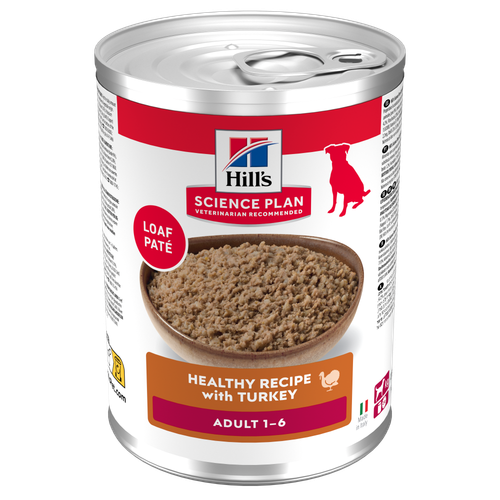
Hill's Science Plan Adult Wet Dog Food with Turkey is a complete premium pet food for adult dogs from 1 year. This deliciously smooth minced turkey loaf is formulated to deliver the appropriate amount of energy to support the needs of adult dogs.

Precisely balanced nutrition with Hill's ActivBiome+ prebiotic blend actively contributes to supporting digestive health and overall wellbeing to help your pet feel their best
Related articles

Dog obesity is a significant problem - learn more about helping your dog become trimmer and healthier through improved nutrition.

Learn to see the signs of an upset stomach in your dog, understand the triggers and explore some possible solutions.

Gurgling tummies in turmoil are not good news for pets. Owners who have to clean up the unfortunate consequences, digestive problems are one of the rare downsides to owning a pet.
Discover the causes, signs, and treatments of kidney disease in dogs and find methods of supporting your dog's kidney health. Learn more at Hill's Pet.

Put your dog on a diet without them knowing
Our low calorie formula helps you control your dog's weight. It's packed with high-quality protein for building lean muscles, and made with purposeful ingredients for a flavourful, nutritious meal. Clinically proven antioxidants, Vitamin C+E, help promote a healthy immune system.
Put your dog on a diet without them knowing
Our low calorie formula helps you control your dog's weight. It's packed with high-quality protein for building lean muscles, and made with purposeful ingredients for a flavourful, nutritious meal. Clinically proven antioxidants, Vitamin C+E, help promote a healthy immune system.

